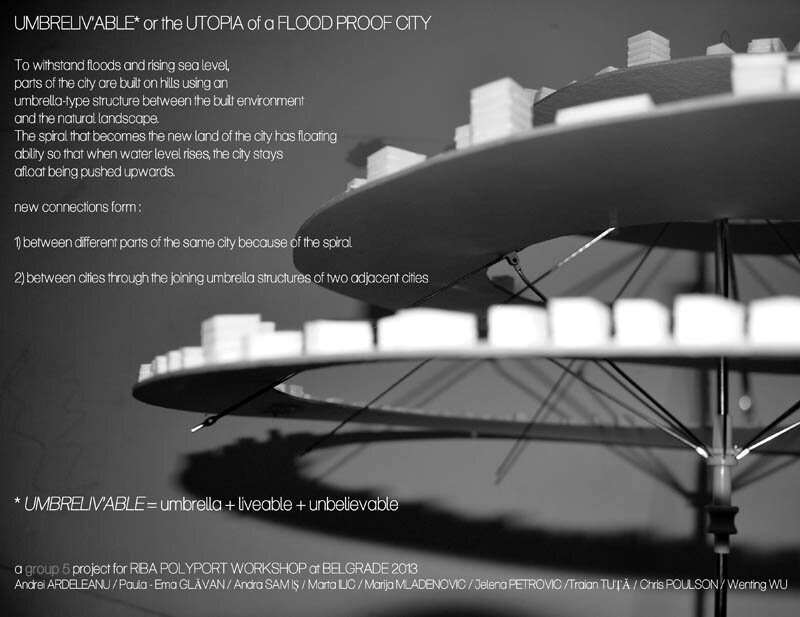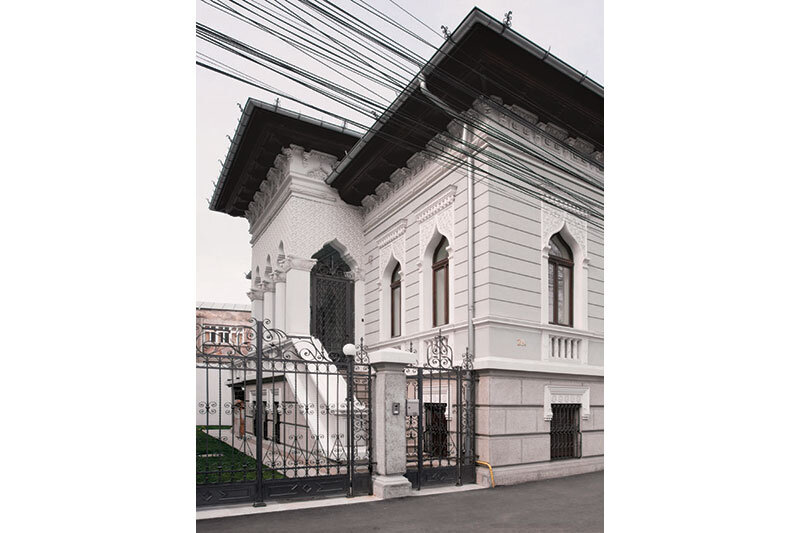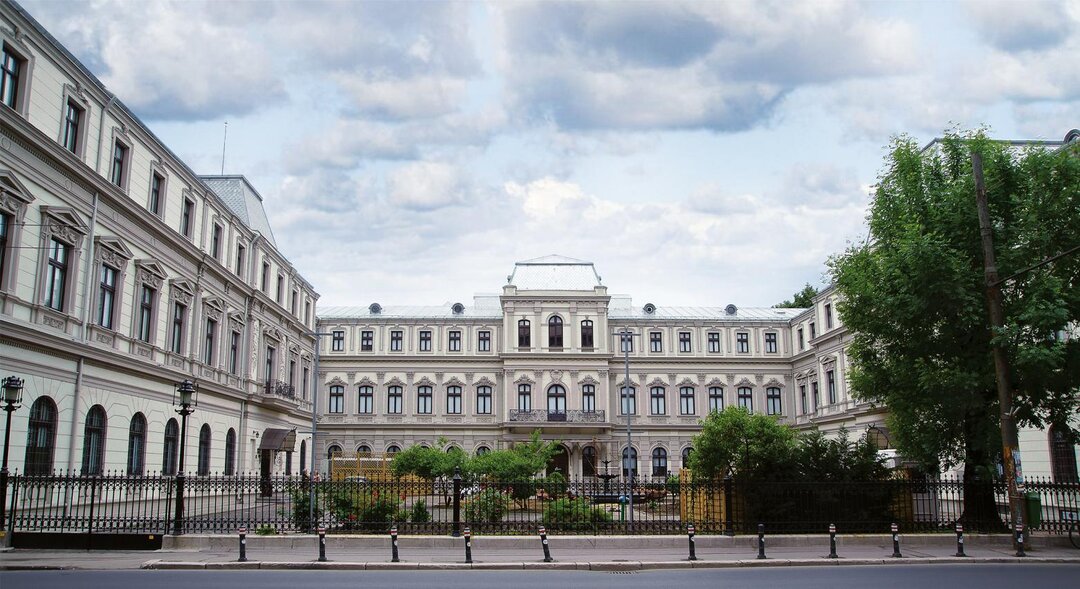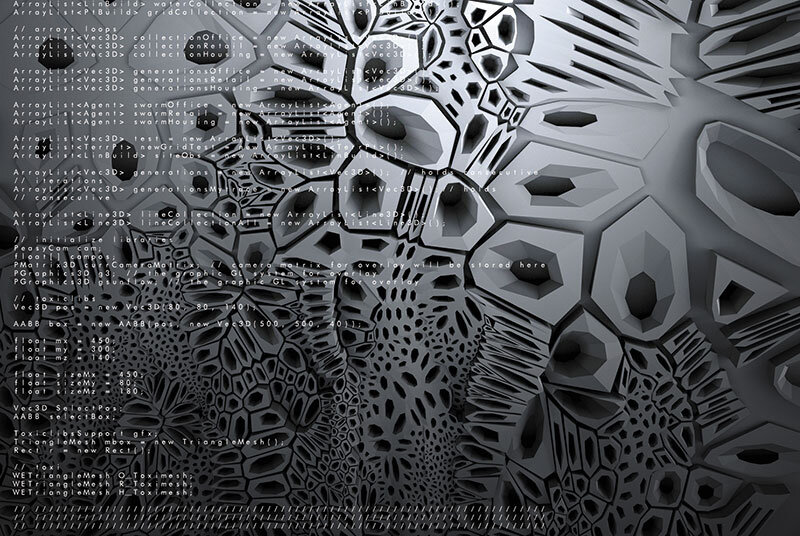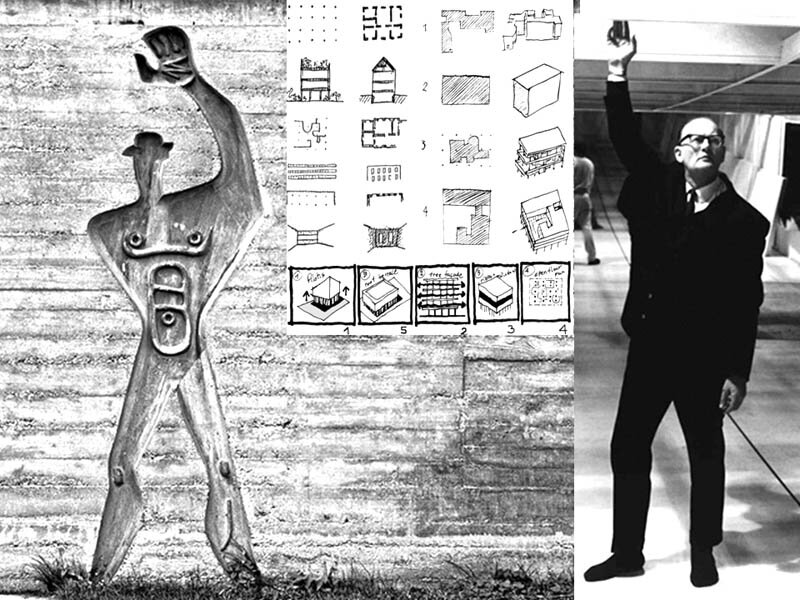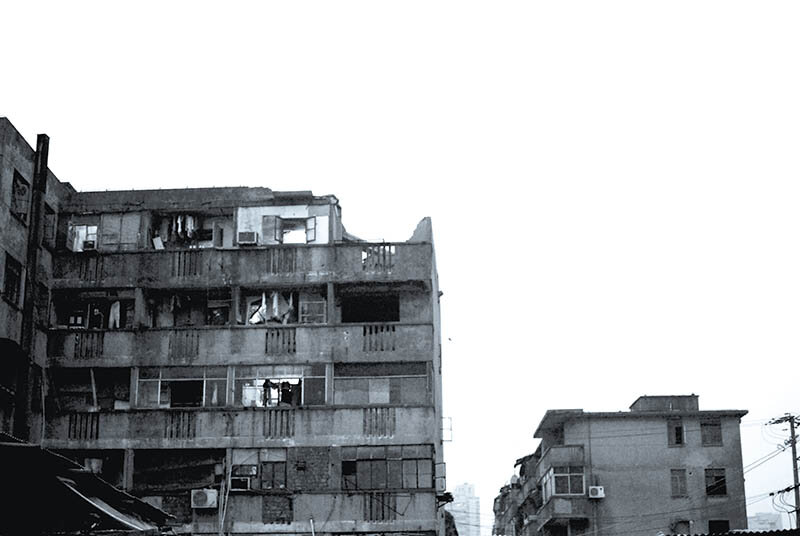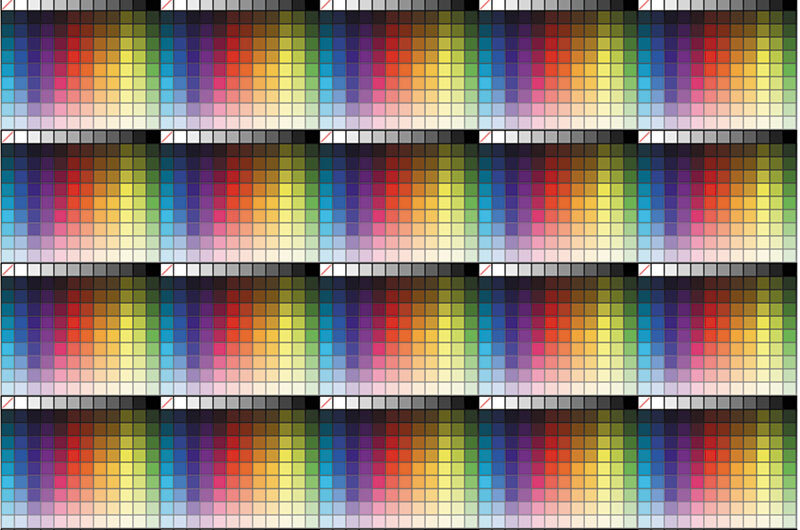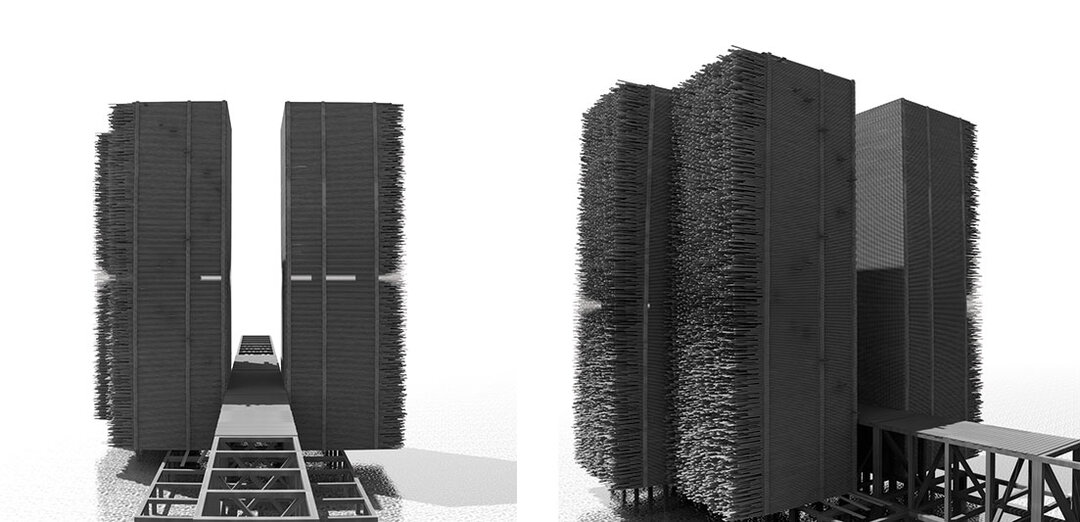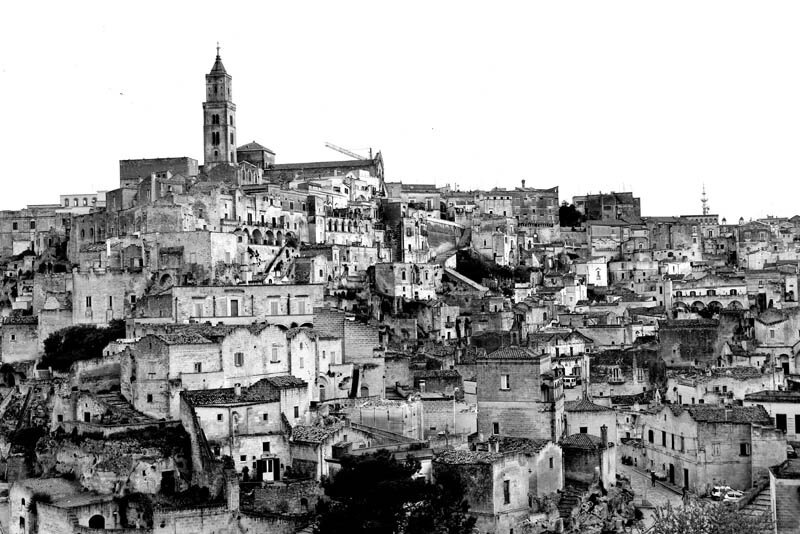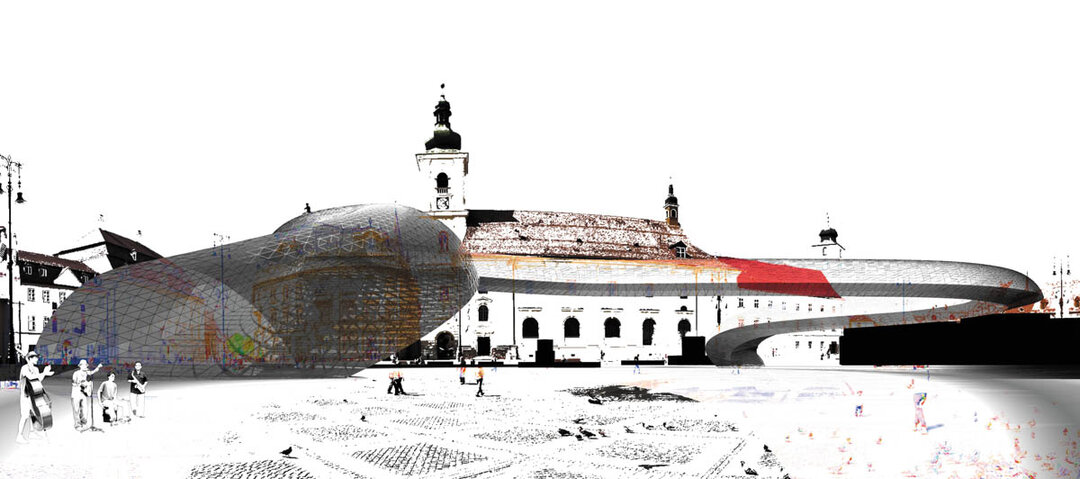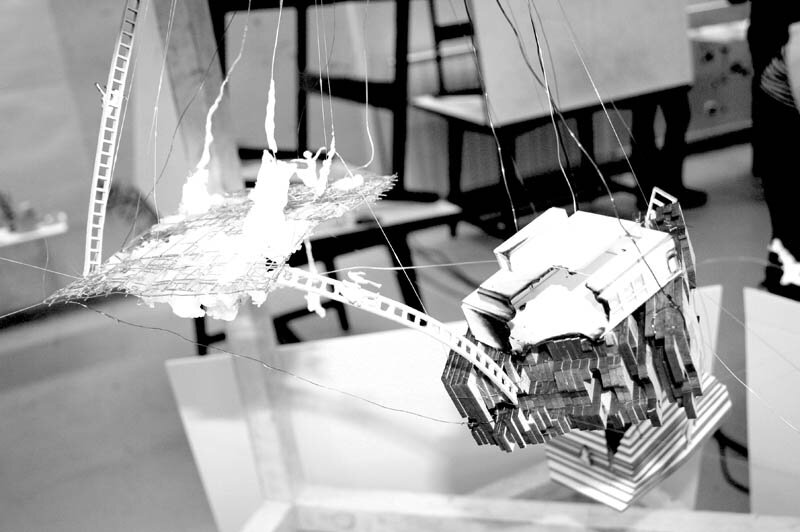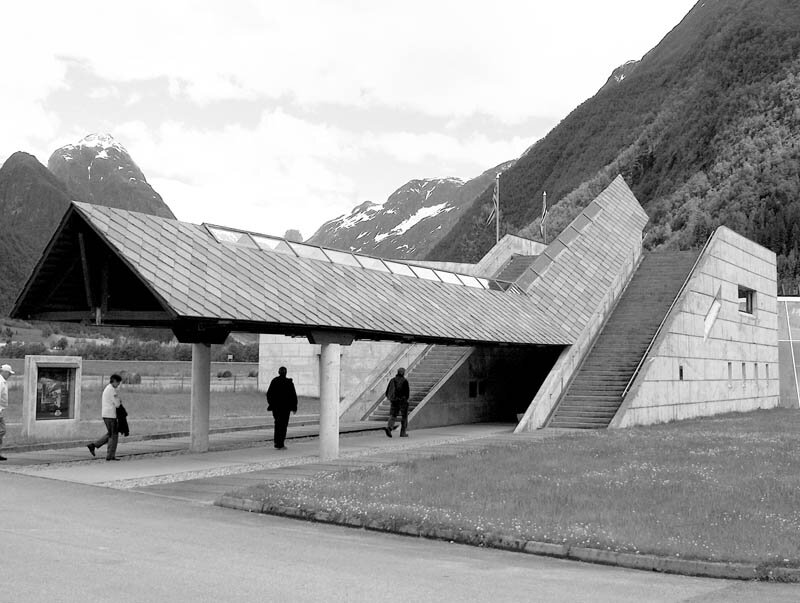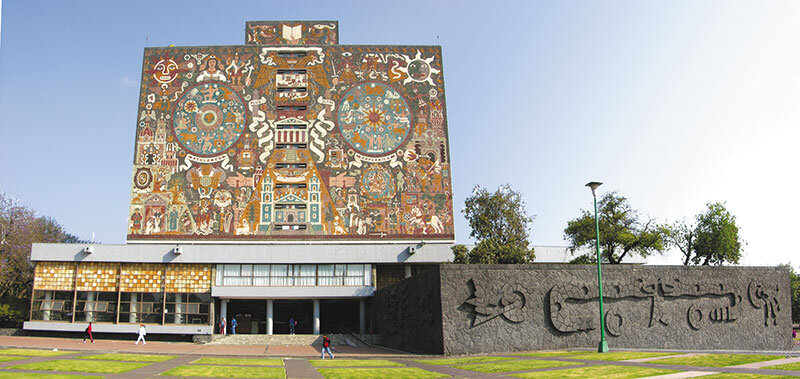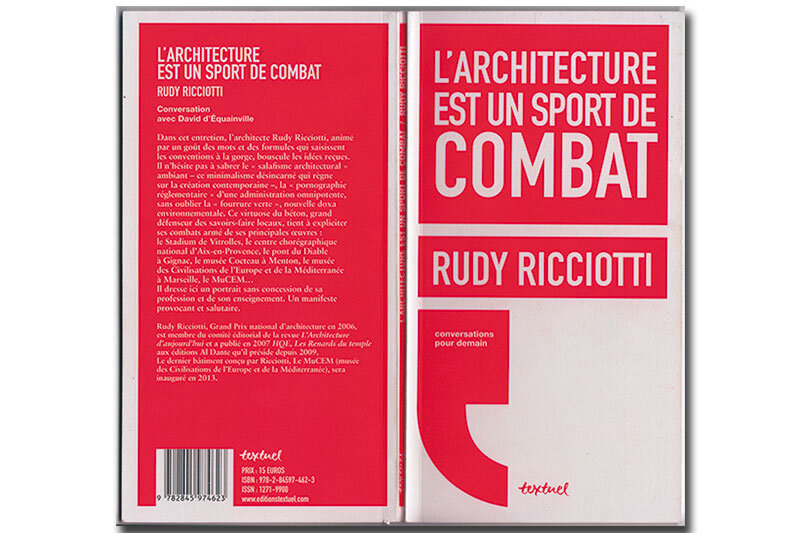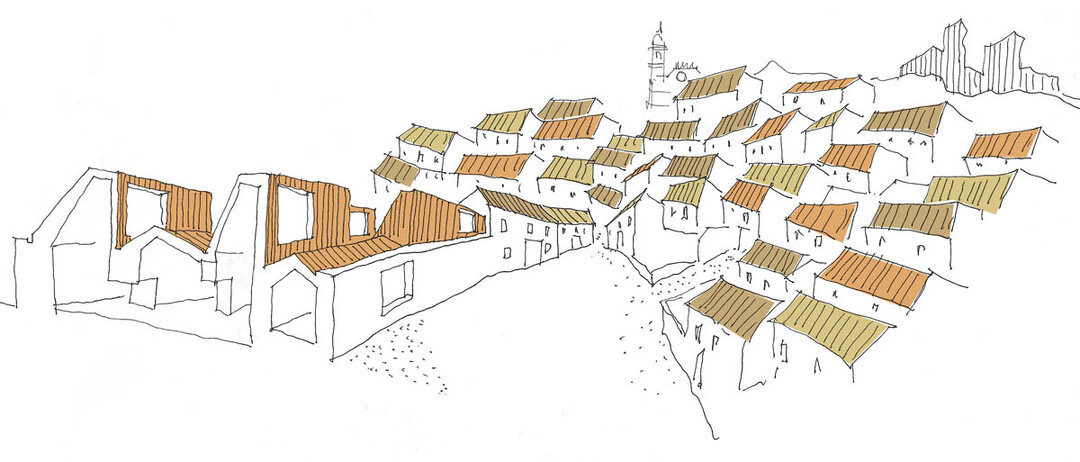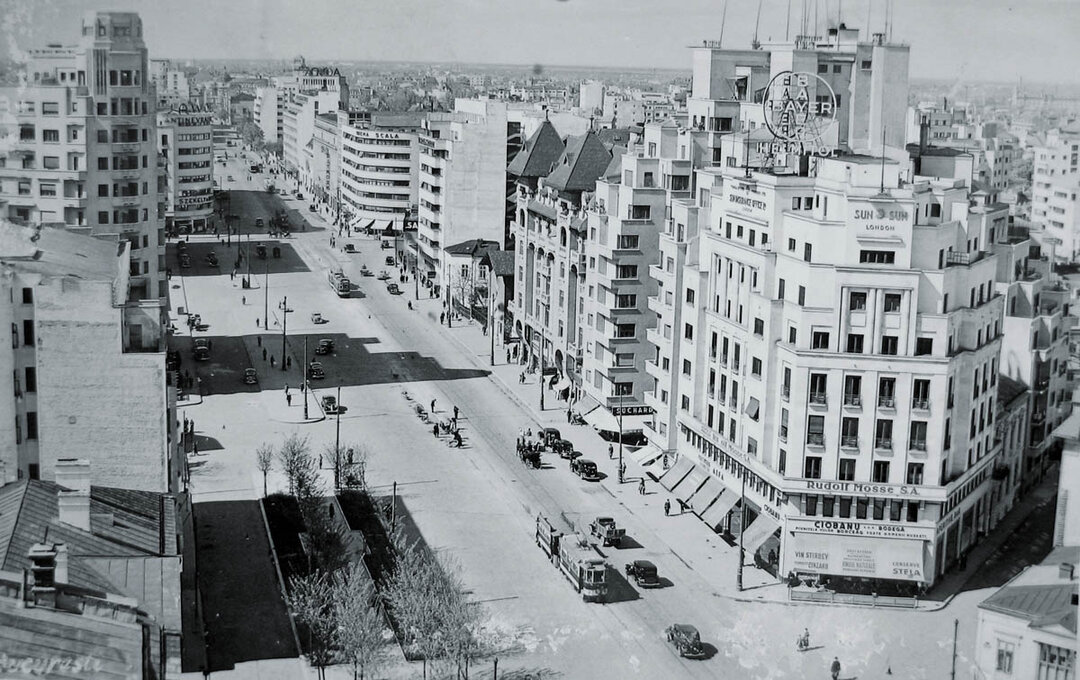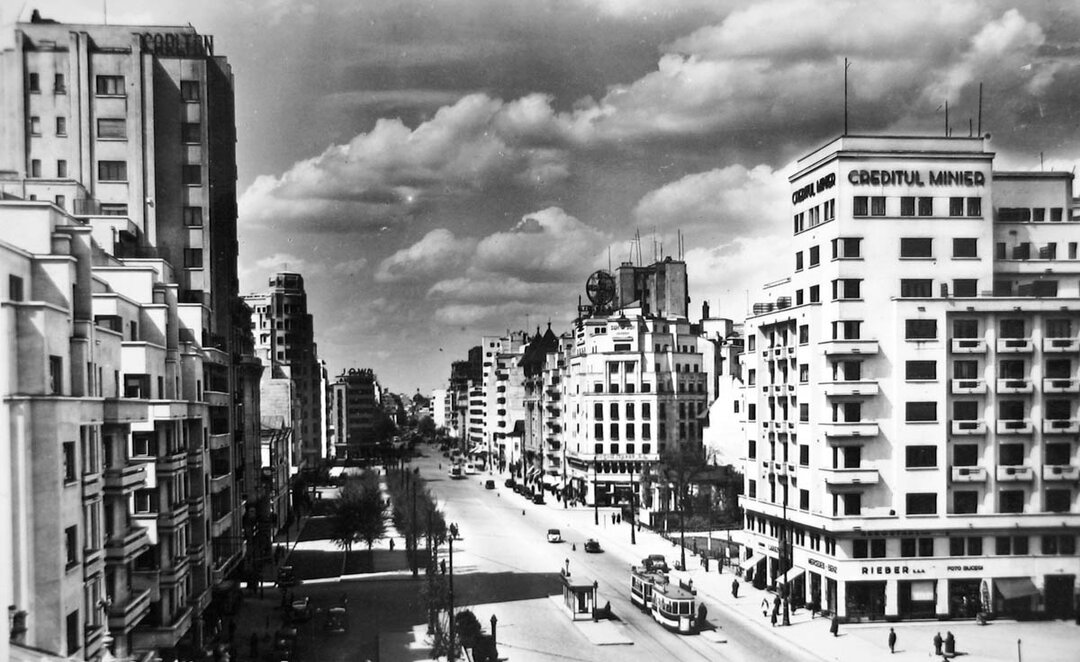
Tabu?
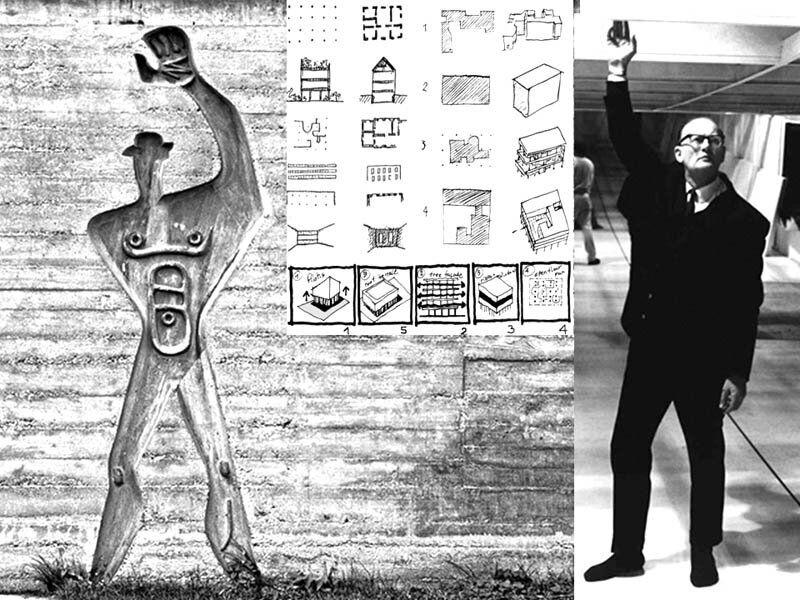
TABOO?
| ARHITECTURA PARE AZI, MAI MULT DECÂT ORICÂND, PRINSĂ ÎN CAPCANA DINTRE DEMOCRAȚIE ȘI ELITISM, ADICĂ DINTRE NECESITATEA DE A FUZIONA CU VIAȚA ȘI IMPERATIVUL DE A SE ÎNSCRIE ÎN CANONUL ESTETIC AL VREMII. (DESPRE ACEASTĂ NEIDENTIFICABILĂ CONSTRÂNGERE ESTETICĂ, MATISSE SPUNEA ACUM UN SECOL: „NU SUNTEM STĂPÂNI PE CREAȚIA NOASTRĂ. NE E, ÎNTR-UN FEL, IMPUSĂ”.) |
| Arhitectura bună este cea care are abilitatea de a negocia convenabil cu ambii stăpâni. Or, astăzi, arhitectura lumii pare resemnată a se epuiza mai mult într-o luptă cu viața. A renunțat la orice tentativă de a se abate de la calea trasată de „farul călăuzitor” al criticii estetice oficiale. O copleșește, poate, efortul de a controla impulsurile viscerale ale bugetului, funcțiunii, presiunii politice, gustului popular, apoi ale propriilor emoții, experiențe, ambiții, amintiri și idiosincrazii auctoriale. Sau e, mai degrabă, descurajată, după eșecul câtorva admirabile încercări de primenire a formelor, din ultimele decenii ale secolului trecut. Cert e că toți arhitecții, de la megastar la student, trecând prin formatorii lor, cumințiți, și-au canalizat din nou imaginația într-o unică direcție formală: cea direct descendentă din modernism. Unde ne sunt avangardiștii? Toată arhitectura îngână voios refrenul secular despre simplitate și economie de mijloace. Ni s-a integrat în subconștient? Același cod estetic reducționist, denunțat acum jumătate de secol ca autist, e promovat mecanic, e perfectat, distilat, reinteriorizat și intelectualizat la limită, sublimat, apoi impus vieții. Biata viață tot nu se acomodează cu el, dar nu-i nimic, războiul de gherilă continuă.Noi, inițiații, sigur că-l iubim pe Peter Zumthor, de exemplu, pentru că așa am fost crescuți, și el, și noi, să cultivăm sensibilitatea calvină pentru forma frustă și impecabilă. Și el o face magistal. Dar restul lumii ce vină are, ce să înțeleagă din zumtorismele livrate de sutele de mici zumtori, ca pe Louis Vuittoanele din vinilin? Ce-i spun ele omenirii - care, de altfel, continuă să le evite constant? Nu mă refer anume la minimalism - un curent legitimat să existe, ca oricare altul - ci la omniprezentul limbaj modernist în ansamblu, cel creat în și pentru epoca industrializării. Cât o să mai insistăm, ca late moderniștii, ca socialismul, să trecem o bătrânică strada fără să ținem cont că ea tot nu vrea? Cine e răspunzător că arhitectura ignoră fenomenele cultural-sociale asociate actului ei de creație?Răspuns: înalta critică de arhitectură, venerabilii erudiți care blochează prompt căutările altor limbaje alternative, mai democratice. Ei au băgat frica în arhitectură, după ce au executat public postmodernismul, cu un incredibil zel înspumat, apoi au înfierat sever deconstructivismul, de n-a mai rămas nimic din ele. Le-au zdrobit, cu fondul lor democratic cu tot. Complexității i-au spus haos. Ironiei i-au spus neseriozitate. Condescendenței sociale i-au spus populism. Formelor cu care încercau postmoderniștii să „încălzească” arhitectura, vigilenții i-au spus kitsch. N-au ținut cont că era, în fond, o primă încercare de a dezgheța „războiul rece” cu lumea. Ca urmare, din teama instinctivă de această critică olimpiană, înțepenim și acum în același instrumentar expresiv, mereu resuscitat. Nici măcar „inventariat”, cum ar spune Zevi, sau „revizuit”, cum ar spune Derrida. Sau prea puțin.AESTHETICALLY CORRECT
Vocabularul modern are încă suficiente resurse pentru a fi perpetuat, ni se tot spune (de exemplu, de către William J.R. Curtis). Numai revoluțiile totale pot determina schimbarea de limbaj. Revoluția digitală, ecologică, tehnologică, democratizarea permanentă a culturii (și cea controlată, și cea scăpată din mână) nu sunt suficiente, s-ar zice. Deci nu e nicio șansă, prin urmare a încetat orice căutare. Arhitectura noastră a renunțat chiar la conștientizarea situației. A uitat cum odată căutările ei continuau, chiar după ce John Ruskin sancționa Cristal Palace cu apelativul seră de castraveți. Continuau și în timp ce el afirma, cu toată autoritatea și elocința lui, că stilurile arhitecturale existente ar fi fost mai mult decât suficiente pentru nevoile societății contemporane lui, concluzionând dogmatic: „Nu ne trebuie un nou stil în arhitectură”. (Și Farfuridi al nostru spunea „ori să se revizuiască, primesc! dar să nu se schimbe nimica; ori să nu se revizuiască...”) Ei bine, da, oricât de liberală s-ar pretinde postmodernitatea, continuăm să fim îndru-mați de o critică estetică oficială, ca pe vremea academiștilor. E la fel de bine intenționată, de convinsă de adevărul ei, dar și de rigidă și restrictivă. Spre deosebire însă de critica à la Blondel, centralizată și cam naivă (deci nu i-a fost greu unui spirit subțire ca al lui Perrault să-i dea un bobârnac), estetica occidentală de azi e mai difuză, mai insinuantă și astfel mai hegemonică. Zeci de comisii de jurizare au, în privința limbajului arhitectural, criteriile trase la xerox și gravate pe creier. Zeci de reviste bine cotate impregnează retina arhitecților cu paradigme neo-moderne - izbutite, nu-i vorbă, și întotdeauna fotogenice, pentru că sunt selectate pe criteriul aceluiași idiom cool (și la propriu, și la figurat). Ele creează mituri. Critica prin imagine și globalizarea comunicării întăresc puterea acestui cod formal. A devenit subliminal, stăpân pe conștiința breslei. A devenit un de la sine înțeles. Astfel, fenomenul e în primul rând greu de localizat, pentru a fi apoi relativizat. Nu există, desigur, nicio conspirație malefică de anihilat. Din păcate! Există doar ceea ce a existat dintotdeauna: confortul reperelor garantate. Există adevăruri confiscate și acreditate, la nezdruncinarea cărora veghează comisiile și venerabilii. Ele stau apoi la dispoziția întregii critici și a întregii arhitecturi ca repere sigure. Pe fondul lor, orice creație își poate apoi permite jocul de-a subiectivitatea, declarată cu mândrie. Dar vai de cel care nu își delimitează prin autocenzură libertățile! În final, diversitatea de opinii e doar o amăgeală căci, pe subiectele tabu, niciuna nu depășește cadrul tutelar admis. Sunt toate „aesthetically correct”. |
| Citiți textul integral în numărul 3/2013 al revistei Arhitectura |
| TODAY, MORE THAN EVER, ARCHITECTURE SEEMS TO BE CAUGHT IN A TRAP BETWEEN DEMOCRACY AND ELITISM, NAMELY, BETWEEN THE NEED TO FUSE WITH LIFE AND THE IMPERATIVE TO COMPLY WITH THE AESTHETIC CANON OF ITS TIME. (ON THIS UNIDENTIFIABLE AESTHETIC CONSTRAINT, MATISSE SAID, A CENTURY AGO: “WE ARE NOT MASTERS OF OUR OWN CREATION. IN A WAY, IT IS IMPOSED ON US”.) |
| Good architecture is that which is capable to negotiate conveniently with both its masters. Or global architecture nowadays seems to be rather resigned to leading an exhausting battle with life. It has renounced any attempt to stray away from the path lit by its “beacon”, i.e. official aesthetic critique. It is most likely overwhelmed by the great effort made to control the visceral impulses of the budget, the functionality, the political pressure, popular taste, then its own emotions, experiences, ambitions, memories and auctorial idiosyncrasies. Or rather it has become discouraged after the failure of several admirable attempts made in the last decades of the past century to refresh its forms. The fact is that all architects, from the megastar to the student, passing through their tempered trainers, have once more channeled their imagination into one single formal direction, i.e. that which directly descends from modernism. Where are our avant-gardists? All architecture is briskly humming the century-old tune about simplicity and sparingness of means. Has it become integrated in our subconscious already? The same reductionist aesthetic code, denounced half a century ago as autistic, is being promoted mechanically, perfected, distilled, re-appropriated and intellectualized at the last minute, then imposed upon life. Poor life keeps on refusing to come to terms with it, but in vain; the guerilla war continues.We, the initiated, surely love Peter Zumthor, for instance, because this is how we have been brought up: respectful of Calvinist sensitivity, of the crude, impeccable form. And he does it in masterly fashion. But what is the fault of the rest of the world, what is it supposed to make of all the Zumthor-like products delivered by the hundreds of little Zumthors like hundreds of plastic Louis Vuittons? What do they tell the world - which avoids them constantly anyway? I am not referring to minimalism in particular, a trend entitled to exist like any other, but to the omnipresent modernist language on the whole, the one created in and for the industrial era. How much will we insist, like the late modernists, like socialists, to help an old lady cross the street without taking into account the fact that she doesn’t want to? Who is responsible for the fact that architecture ignores the cultural and social phenomena associated with its act of creation?The answer is: the high architectural critique, the venerable scholars who promptly block any quests for alternative, more democratic languages. It is they who put fear in architecture’s heart, after having publicly executed postmodernism with an incredible zeal, and then after having severely stigmatized deconstructivism as well until nothing remained. They crushed them to the ground, their democratic base and all. They called the complexity chaos, they called irony lack of seriousness, they called social condescendence populism. The vigilant ones described as kitsch the postmodernist forms meant to “warm architecture up” a little. They took no account of the fact that it was basically a first attempt to terminate the “cold war” with the world. Consequently, due to the instinctive fear of this Olympian criticism, we are still stuck to using the same set of expressive tools, constantly revived. We have not even “made an inventory” of it, in Zevi’s words, or “revised” it, as Derrida would say; or we did so to a very little extent...AESTHETICALLY CORRECT
Modern vocabulary still possesses sufficient resources to be perpetuated, we are constantly told (for instance, by William J.R. Curtis). Only total revolutions can cause a change in language. The digital, the ecological, the technological revolutions, the permanent democratization of culture (the controlled one, as well as the one which got out of hand) are not sufficient, one would say. Therefore we do not stand a chance; therefore, any quest has ceased. Our architecture has even given up on becoming aware of the state of play. It has forgotten all about its former quests, including after John Ruskin sanctioned Cristal Palace by calling it a cucumber hothouse. The same quests were in progress while he stated, in all his authority and eloquence, that existing architectural styles would have been more than sufficient for the needs of contemporary society, and drew the dogmatic conclusion: “We do not need a new style in architecture”. (Our Farfuridi would also say “it can be revised, I agree! but it should not change a bit; or it should not be revised...”) Well, however liberal postmodernity might consider itself, we continue to be guided by an official aesthetic critique, like in the days of academia. It is well-meaning and thoroughly convinced of its truth, but it is just as rigid and restrictive. However, unlike the critique à la Blondel, centralized and fairly naive (therefore easily mockable by a sensible spirit like Perrault), Western aesthetics nowadays is more vague, more allusive and therefore more hegemonic. As far as the architectural language is concerned, dozens of jury committees boast the same photocopied criteria which are also engraved on their brain. Dozens of reputed magazines assault the architects’ eyes with neo-modern paradigms, which indeed are fairly accomplished and unfailingly photogenic, given that they have been selected according to the same criterion of the cool idiom (literally, as well as figuratively). They do create myths. The critique by images and the globalization of communication are strengthening the power of this formal code. It has become subliminal, completely taking over the guild’s conscience. It has become a matter of course. Thus, the phenomenon is primarily hard to locate in order to be afterwards undermined by relativity. There isn’t any evil conspiracy to dismantle, unfortunately. There is only what has always been: the comfort of secure landmarks. There are truths which have been confiscated and then accredited, the untroubled supremacy of which is watched over by committees and respectable persons. They are then made available to the entire critique and to the entire architecture as safe landmarks. Backed by such landmarks, any creation can then afford to be subjective, and openly and proudly so. But pity the fellow who fails to establish the limits of his freedoms by self-censorship! Finally, the freedom of opinion is just a sham, because no freedom can go beyond the accepted and guarded limits when it comes to taboo topics. They are all “aesthetically correct”. |
| Read the full text in the print magazine. |
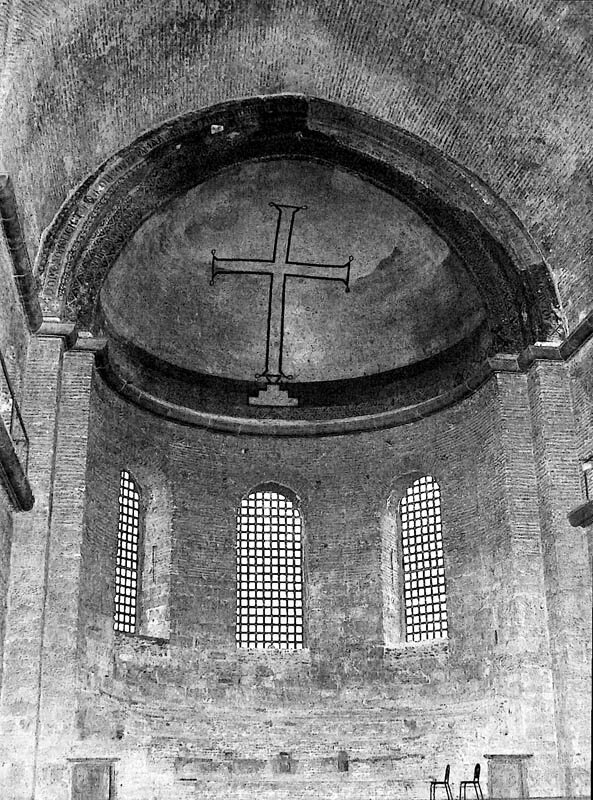
Biserica „Sfânta Irina” din Constantinopol. Imaginea ei de azi datează, în cea mai mare măsură, din secolul al VIII-lea. Crucea de pe semicupola altarului este un martor unic al artei iconoclaste.
„Saint Irene” church in Constantinople. Its current image dates back mainly to the VIIIth century. The cross on the altar’s semi-dome is a unique testimony of iconoclast art.
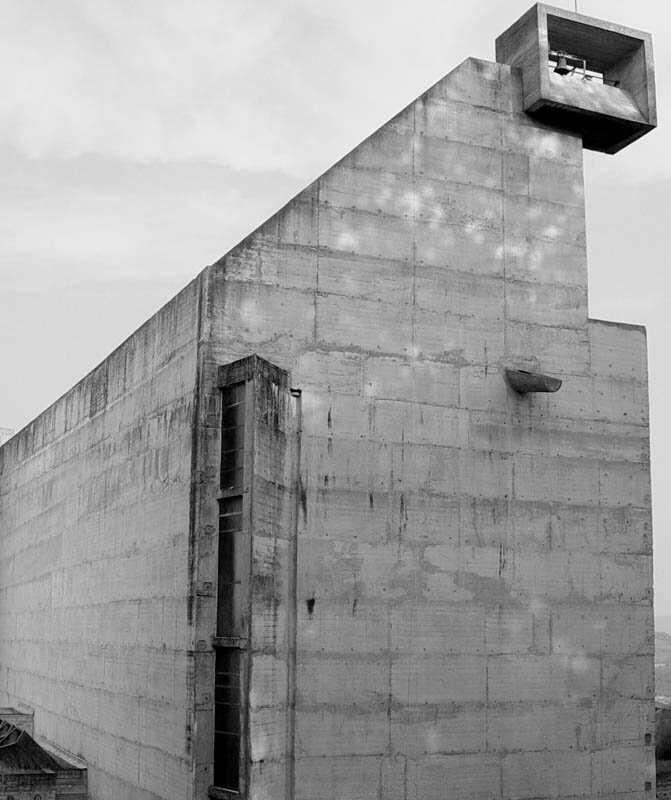
Biserica Mănăstirii „Sainte Marie de La Tourette”, Le Corbusier. Proiectarea a început în 1953 și construcția s-a încheiat în 1960.
The church of the „Sainte Marie de La Tourette” monastery, Le Corbusier. The design work started in 1953 and the construction was completed in 1960.

Moise cu cele zece porunci, pictură de Rembrandt din 1659.
Moses with the Ten Commandments, oil painting, Rembrandt, 1659.
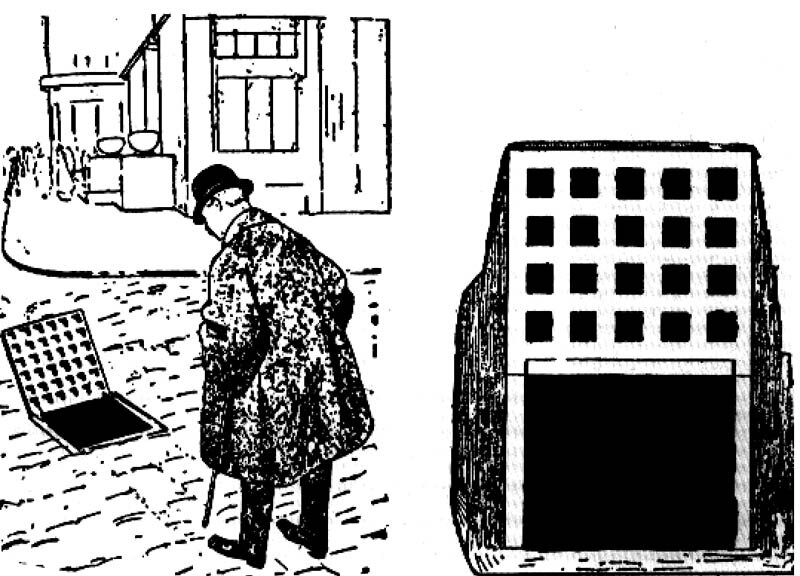
O interpretare a protomodernismului lui Loos din 1911, atunci când publicul se mai interesa de arhitectură. Se referea la recent apăruta fațadă a imobilului Goldman-Salatsch
An interpretation of Loos’ protomodernism in 1911, when the public still took an interest in architecture. It was concerned with the recent facade of the Goldman-Salatsch building.
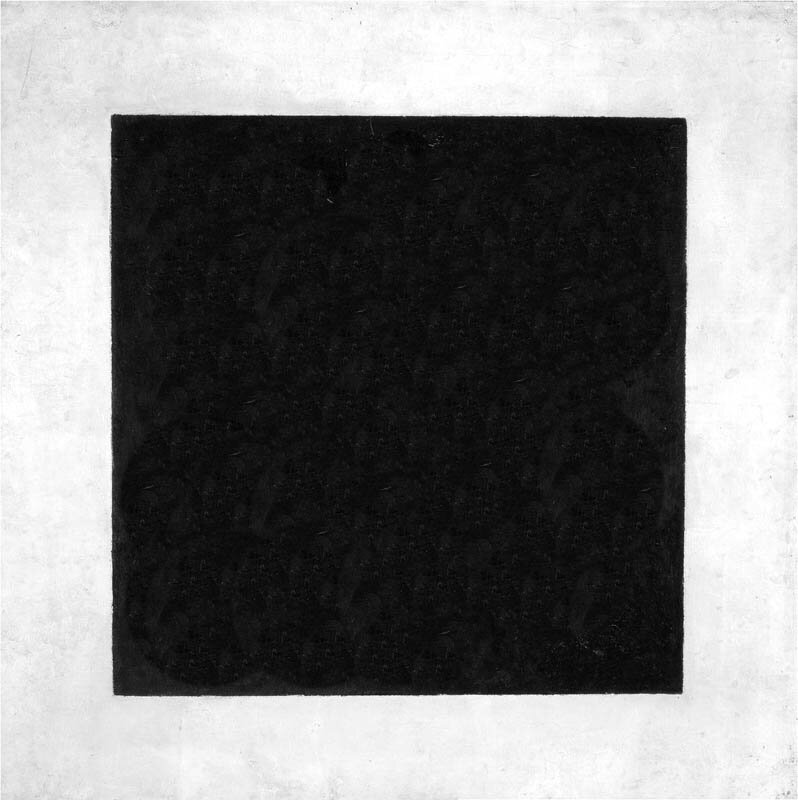
Malevici, pictură în ulei: Pătrat negru pe fond alb, 1913;
Malevich, oil painting: Black square on a white background, 1913;

Malevici, pictură în ulei:
Alb pe alb, 1918;
Malevich, oil painting:
White on white, 1918;

Malevici, pictură în ulei: Pătrat roșu: realism pictural al unei țărănci în două dimensiuni, 1915;
Malevich, oil painting:
Red square: painterly realism of a peasant woman in two dimensions, 1915;
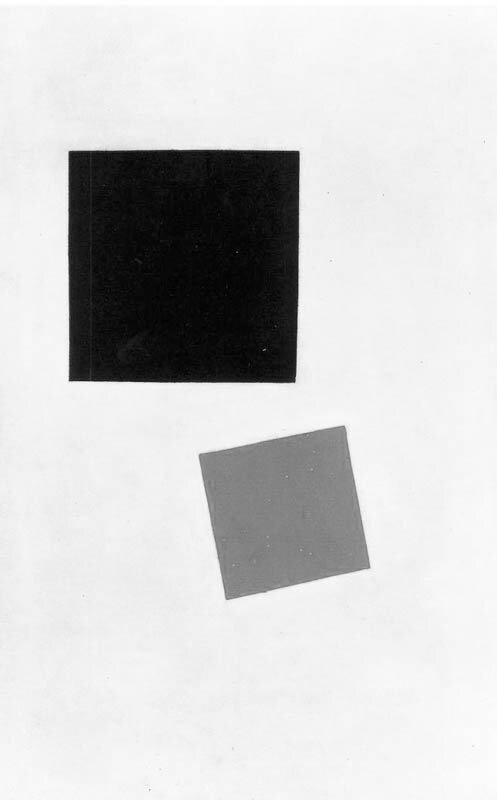
Malevici, pictură în ulei: Pătrat negru și pătrat roșu: realism pictural al unui băiat cu rucsac în patru dimensiuni, 1915.
Malevich, oil painting:
Black square and red square: painterly realism of a boy with a backpack in four dimensions, 1915.


